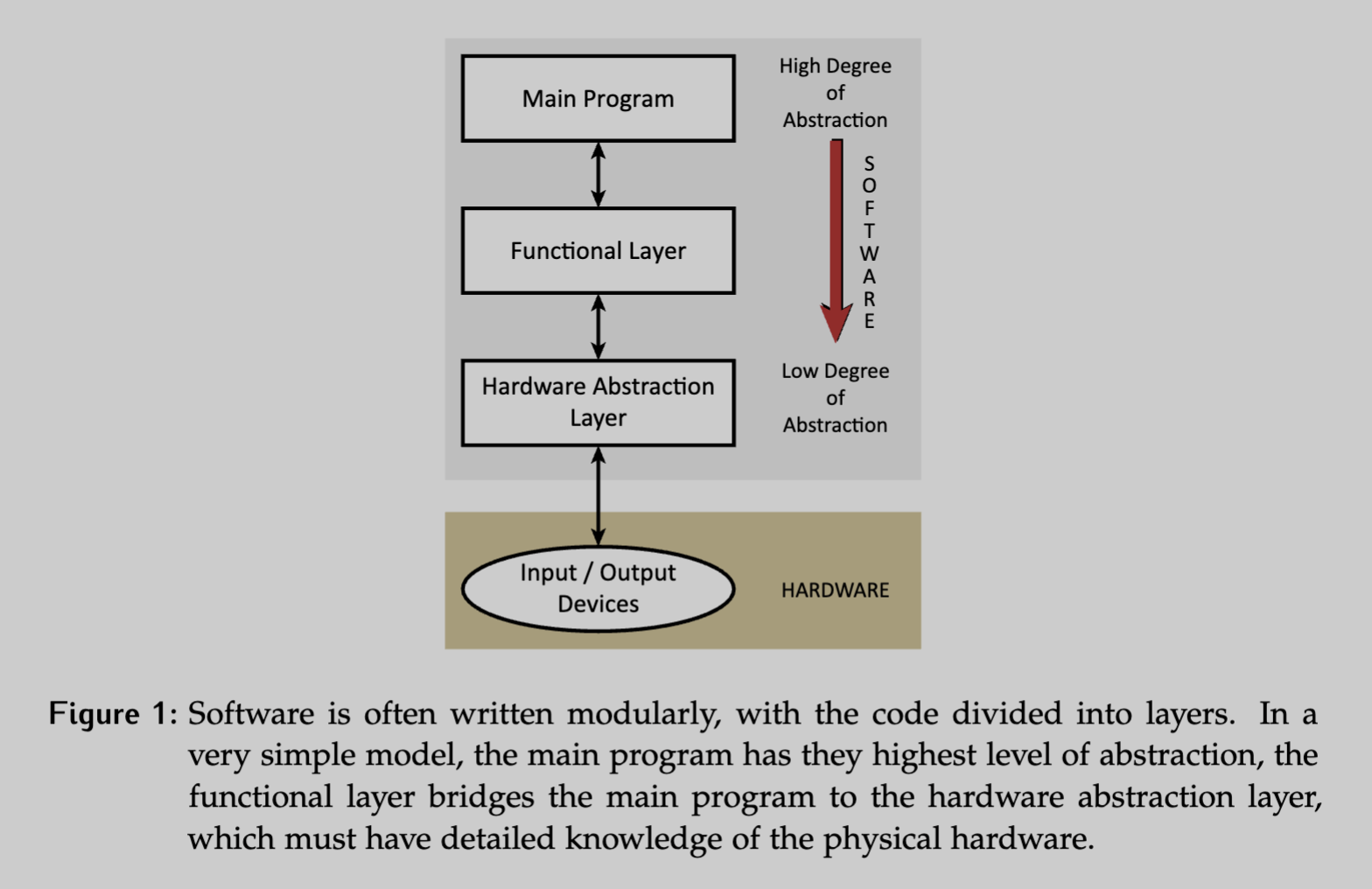Building an embedded system requires both hardware and software design work. Generally, embedded software is divided into 3 layers:
- High-level program/app. This is highly abstracted, such that it should not know anything about the hardware itself. For example, it may be waiting for an input from a button, but it doesn’t matter if this button is from a GUI, mouse, or keyboard.
- Functional level. Has less abstraction than the main program, so it will be aware of whether the input originated with a mouse or a keyboard, but doesn’t need to know the specs of the device.
- Hardware abstraction layer (HAL). Requires knowledge of the external hardware it is interacting with. This is the lowest layer of code, and does the following:
- Initialize device configuration
- Read or write data
- Synchronize using polling or interrupts
